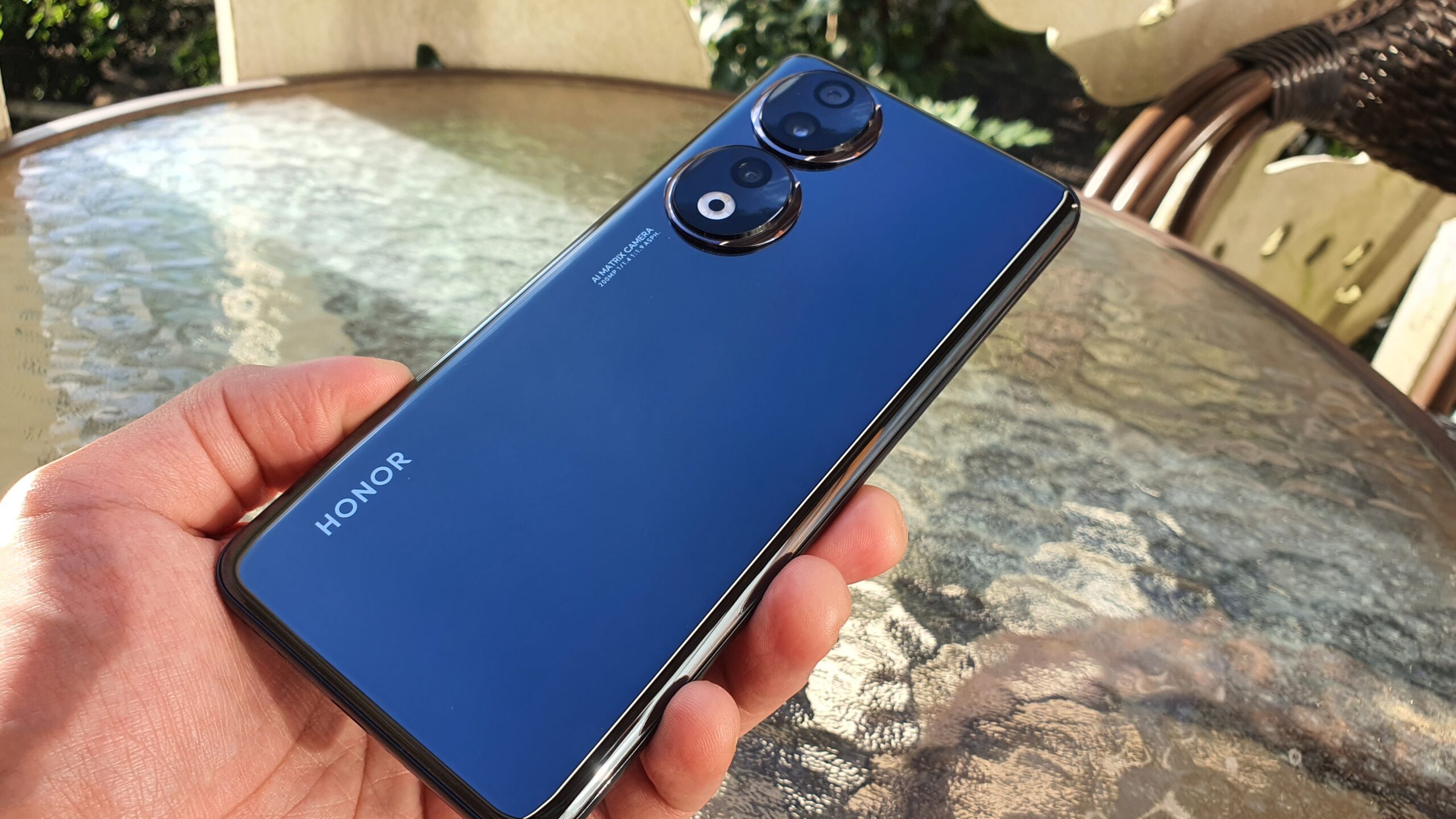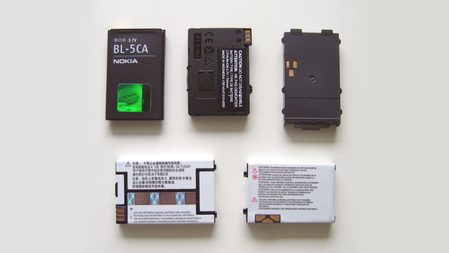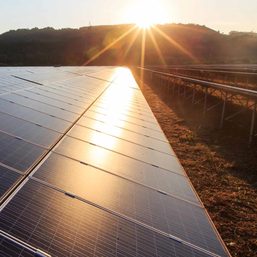SUMMARY
This is AI generated summarization, which may have errors. For context, always refer to the full article.

MANILA, Philippines – Smartphones are the most common and ubiquitous consumer electronics device today, estimated to have more than 4.5 billion users in 2022.
These devices consume a lot of energy and resources to make, generating over 146 million tons of carbon dioxide or equivalent emissions, according to financial advisory group Deloitte’s estimates in 2022. It’s actually a tiny fraction of the 36.8 gigatons of emissions produced in 2022, but as Deloitte notes, “it is still worth trying to reduce.”
Where is the carbon or equivalent emission produced in the life of a phone? In 2022 estimates, about 83% is said to come from the manufacture, shipping, first-year usage of new smartphones, while about 11% comes from the usage of existing phones, 4% comes from refurbishing old phones, and another 1% is from recycling processes.
What does this tell us? A new smartphone purchase has a bigger carbon cost than extending one’s usage of an existing phone.
As it stands, the standard practice among almost, if not all, smartphone manufacturers is to release new models on an annual basis. That’s the current pace of this business, which is designed to push you to upgrade sooner rather than later. There have been some evidence, however, that people are holding on to their phones longer, partly due to seemingly more minor annual improvements.
Apple, earlier this year, was also investigated by France over accusations of planned obsolescence. The EU is legislating for replaceable batteries in phones, while the Biden administration in the US has pushed for more robust right-to-repair laws. All of these actions may potentially lengthen phone ownership.
But even amid shifting buyer trends spurred partly by the lack of significant improvements, and government-led initiatives to extend smartphone usefulness, smartphone manufacturers aren’t likely to shift release cycles anytime soon.
New products, at least for the foreseeable future, will continue to come out annually. As informed consumers, we can choose to not immediately latch on to the shiny new thing, especially if the year-to-year improvement isn’t that striking.
But if it’s really time to upgrade, let’s take a look at which brand has the greenest processes, based on the latest versions of their sustainability reports, and other press-issued statements.
Apple
Apple has long been viewed as a leader in environmental standards, and the tech giant has never been shy to incorporate its progress in these initiatives to its product marketing.
At its annual September launch event, the iPhone-maker aired a five-minute sketch, where CEO Tim Cook, among other employees, held a meeting with a personified Mother Nature, played by Hollywood actor Octavia Spencer.
In that meeting, Cook and company try to win over Mother Nature’s heart by sharing with her a report of the progress the company has made on its sustainability objectives.
The video is, of course, meant to tout how this year’s Watch models reportedly carry the carbon neutral branding, with the company aiming to do the same for all of its products by 2030.
The sketch drew mixed reactions from the public. Some called it out for how it used climate initiatives to sell products, while others simply didn’t find it entertaining at all.
For this list, however, the focus will be on the iPhone. As mentioned previously, manufacturing smartphones is energy- and resource-intensive, creating a lot of emissions that impact the environment.
Last year’s iPhone 14 Pro, for instance, emits 65 kg of carbon dioxide into the atmosphere during its lifecycle, according to Apple.
No less than 81% of those emissions occur during the manufacturing process, which covers the extraction of raw materials, the manufacturing of the device itself and transport, to name a few steps.
This year’s iPhone 15 Pro, in comparison, emits 66 kg of carbon dioxide, one kilogram higher than the iPhone 14 Pro’s emissions. Apple, however, notes that the 15 Pro’s emissions would have been 26 kg higher if not for the use of more recycled materials and clean energy solutions.
Still, it’s not a move towards a lower number, so it’s tough to argue that the iPhone moved the needle this year in terms of green efforts.
What might be worth mentioning is that Apple debuted USB-C connectivity on this year’s iPhone generation, the iPhone 15. While it can be argued that the European Union’s common charger legislation forced the company’s hand, the change still marks a significant contribution towards lessening e-waste.
With iPhones now sporting a USB-C port, you’ll be able to use the cables and adapters you might already have to charge your device.
Making the USB-C as standard across all devices is estimated to save at least 11,000 tons of e-waste annually.
Xiaomi
Xiaomi is similarly taking action to reduce its carbon emissions, adopting what it calls its Zero-Carbon Philosophy to reach its goals. This plan was reportedly rolled out in phases, and spans different aspects of the Chinese electronics giant’s operations.
The first phase, which was set in 2021, involved Xiaomi lowering carbon emissions of its main headquarters, targeting a 4.5% decrease by 2026 versus its 2020 figure. But in just two years, the company says it has already managed to surpass its target, recording a 21.12% reduction in per capita carbon emissions compared to the 2021 baseline.
The company has also touted new, more energy-efficient technologies in its products.
In the past year, for example, it said it has developed a more energy-efficient 5G and signal transmission solution, reducing the power consumption of the company’s smartphones by up to 30% compared with the previous generation.
Another notable effort is the development of a new, more energy-efficient display technology, which reduces the energy consumption of devices by up to 70% in specific applications.
Xiaomi also promotes a circular economy, anchored by a refurbishing system that renews discarded devices. The company claims that within the past year, it has refurbished about 94,000 smartphones, all of which were later sold again as certified refurbished products.
Other green initiatives include the use of wear-resistant ceramic materials and synthetic silicone in smartphones, the adoption of eco-friendly packaging with less paper and plastic, and the development of a recycling system that finds new use for e-waste.
Honor

Honor in 2023 published its first-ever Environmental, Social and Governance Report, where it outlined its goal to reduce its carbon emissions by 88%, achieve 100% use of renewable energy, and reach carbon neutral operations by 2045.
As part of that sustainability commitment, the former Huawei sub-brand is overhauling its product development lifecycle. For example, it has reportedly reduced its use of hazardous substances and materials by 3,861 tons and recycled more than 1,785 tons of e-waste.
Additionally, 98% of the materials used in the packaging of the Magic V foldable smartphone are non-plastic. On the production side, automated technology is reportedly employed to reduce energy and resource consumption.
These efforts, according to Honor, puts it on track to reach its goal to reach carbon neutral operations by 2045.
realme
Realme in 2023 reaffirmed its commitment to its “Sustainability Vision” initiative, which involves cutting 50% of its carbon emissions from its popular GT smartphone series within five years.
The initiative, which was announced in 2022, has the Chinese brand try to minimize its carbon footprint as much as it can throughout the whole smartphone cycle, from design to manufacturing to recycling.
In its sustainability report, Realme highlighted three important approaches it’s taking as part of the initiative. First, it’s extending the lifespan of its products by adopting a more modular design and improving after-sales services.
Second, it’s adopting stricter standards around hazardous substance control to reduce the environmental impact of the disposal of its smartphones. Last, it has set up a recycling system and a trade-in business to take in discarded smartphones, preventing them from ending up in a landfill.
Realme also touted that its 2022 flagship, the Realme GT2 Pro, is the world’s first TCO 9.0 certified smartphone. TCO 9.0 is a certification given to IT products that fulfill a certain criteria for sustainability.
The GT2 Pro features a biopolymer rear panel, which supposedly decreases carbon emissions from its manufacturing by 35.5%. The material also creates up to two kilograms less carbon emissions for every kilogram made versus petroleum.
OPPO
Similar to the other companies on this list, OPPO also has its own commitment to sustainability that covers the optimization of smartphones’ lifecycles and the use of eco-friendly materials in manufacturing, among others.
What’s a bit different with the company’s approach, however, is it’s also getting like-minded individuals involved in its low-carbon development roadmap.
In 2022, OPPO launched the Inspiration Challenge, which called on tech professionals and entrepreneurs to submit their ideas for tech innovations. Winning ideas were awarded a grant and technical support from the company.
This year, OPPO brought back the challenge, featuring two categories: “Inspiration for People” and “Inspiration for the Planet”. The latter, of course, focuses on solutions that promote green technology as applied to consumer electronics.
Among the winners was Estonia-based startup Woola’s packaging solution for the OPPO Watch, made from recycled wool. Each of the five winners received a grant of $50,000 as well as opportunities to collaborate with OPPO and its partners to further develop their ideas.
OPPO was also recognized by Time in 2023 for its Zero-Power Tag, a tracking device that sends out temperature or location data without using a battery.
The lightweight prototype uses ambient energy sources like radio waves and heat to power it, negating the need for a lithium ion battery, which are harmful to the environment and eventually end up in landfills.
The company said it’s refining the tracker to expand its feature set and perhaps apply it to other smaller devices.
Samsung
Samsung claims that 2023’s S23 models are its “most sustainable phones yet.” The South Korean electronics giant touted the devices’ are UL ECOLOGO-certified for reduced environmental and health impact.
Furthermore, the Galaxy S23 Ultra is said to be made up of 12 internal and external components of recycled material, up from the Galaxy S22 Ultra’s six. The materials include recycled aluminum and glass as well as recycled plastics sourced from discarded fishing nets and water barrels. All the materials for the packaging are also sustainably sourced.
While it’s nice to hear about an uptick in usage of recycled materials, the overall impact is not clear at the moment.
In addition, Samsung promised to deliver up to four generations of OS updates and five years of security updates for the S23 series. This promise should help prolong the life of your device and let you use it longer without it feeling outdated.
Samsung said it’s also made strides towards its New Environmental Strategy, which is the company’s roadmap to reach net zero at the Device eXperience (DX) Division by 2030 and at the company level including the Device Solutions (DS) Division by 2050. The DX division covers the company’s smartphone and home appliance businesses.
Among those strides is the increase in use of renewable energy by 65% compared to the previous year, reaching 8,704 gigawatt hours.
In line with this, all of DX division’s offices in Korea as well as manufacturing plants in Vietnam, India, and Brazil have reportedly transitioned to 100% renewable energy, following the same transition in the company’s US, Europe, and China offices in 2020.
In its annual sustainability report, the company said its efforts in 2022 produced a total sustainability value equivalent to about $88.9 billion. However, in 2023, it’s expecting that value to decline, citing “global economic recession and industry stagnation” as major factors.
It said, though, that this decline won’t stop it from investing in environmental management initiatives in semiconductor process gas reduction and water resource preservation, among others.
Samsung in 2023 also launched its Sustainability Website, showing key data on its progress towards its net zero goals and details on its sustainability-related initiatives. The website, which covers a range of topics, helps the company disclose the relevant information in a transparent and easy-to-digest fashion.
Fairphone

It’s not a household name but when it comes to sustainability, there’s arguably no other brand that has stronger credentials than the Fairphone. This is why the Dutch cooperative has found itself on this list.
In 2023, it released the Fairphone 4, a modern smartphone designed in such a way that you can repair yourself from the comfort of your home. A lot of that repairability comes from the device’s modular design. Its rear panel can, for instance, be unclipped without any tools, while the battery can easily be replaced using your standard screwdriver.
Fairphone also said that the device is manufactured from fair trade gold and silver and ethically sourced aluminum and tungsten as well as recycled metals and plastic. The brand has also committed to recycling the equivalent volume of electronics per device sold.
While some of the aforementioned smartphone manufacturers above also have recycling practices and promote repairability, none of them have gone to the lengths Fairphone has. So in this regard, it deserves some form of recognition, despite the fact that it’s not as readily available as most other phone brands here.
Huawei
Huawei has its “Tech for a Better Planet” planet pledge that focuses on “advancing energy conservation and emissions reduction, promoting renewable energy, and contributing to a circular economy.”
The company said that the average energy efficiency of their main products in 2022, when its last green report was published, has increased 2.1 times compared with 2019.
For their manufacturing processes, Huawei said their use of a digital energy monitoring system that manages power consumption on production lines, and upgrades towards more efficient machines have led to energy savings of 19.67 million kWh throughout 2022, or the equivalent of 11,218 tons of emissions.
Like many brands, they tout the use of lightweight packaging, minimize plastic use, and promote reuse of packaging materials.
Huawei said in its sustainability report, “The longer a product’s lifecycle, the smaller its impact on the environment.”
To that end, they promised “easy” upgrades for their Harmony OS “over the long term.” They touted a smooth user experience across all devices, even providing upgrade services down to their older phones such as the Mate 9 series released way back in 2016.
“The OS makes it possible for users to revive old models from many years ago,” Huawei said.
The company also said it has a global recycling system wherein they work with scrap providers to reuse raw materials for use in refurbishing devices. The program has so far led to 600,000 sold refurbished devices, including phones.
vivo
In its sustainability report, Vivo touts the thinness of their products as a way to reduce materials use. For examples, their S series phones’ components have become thinner by 15 to 30%, resulting in not just a lighter product for the user, but slightly for the environment as well.
The company also said that they’ve made their packaging lighter over the years, citing a reduction of about 18 grams for some models. “For every 10 million mobile phones, the reduction is equivalent to saving the use of 180 tons of paper,” vivo said.
In their Y series phones, 50% of the fibers in their packaging materials come from recycling, with the company saying they’re aiming for a higher percentage gradually. They’ve lowered the use of plastics in earphone and data cable cases too by 17.5% and 6.7% respectively.
For everyday use, the company highlighted how they make their phones more energy efficient for it to last longer. “To the best of our ability, we use electronic components with higher energy efficiency, and use intelligent algorithms to intelligently adjust device performance according to users’ usage scenarios and application needs,” it said.
Making their devices tougher will extend product life too, said vivo, explaining how the rate of display modules cracking has been reduced by 70%.
Assessing sustainability
It’s worth assessing the sustainability efforts of these smartphone giants each year as there’s reportedly a growing number of consumers who are seeking eco-friendly products to support sustainable lifestyles.
In the Philippines, up to 89% of consumers desire sustainable lifestyles but find it difficult due to inconvenience and high costs, according to an Alibaba Group study. Those are the two major factors that are stopping them from changing their shopping behaviors in this aspect.
With regards to the smartphone industry, there are steps being taken to address both inconvenience and costs in support of sustainability, led by the EU with its new rules on USB-C standardization, battery replaceability, and right-to-repair laws.
Such regulations can help solve the two aforementioned challenges stopping consumers leading sustainable lifestyles, allowing them to hold onto their devices for longer, which saves them from repair fees or the cost of a new device.
Would these changes offset the smartphone industry’s impact on the environment? Alone, perhaps not.
However, when factored in with the other initiatives that companies like Apple, Samsung, and Xioami, to name a few, are rolling out behind the scenes as well as the EU’s other regulatory efforts, there’s a strong potential to turn the smartphone value chain green. – Rappler.com
Add a comment
How does this make you feel?


![[GAMES & GADGETS] Product announcements, prices, and promos: July 2024](https://www.rappler.com/tachyon/2024/06/gadgets-and-games-dev-story.jpg?resize=257%2C257&crop=287px%2C0px%2C720px%2C718px)












There are no comments yet. Add your comment to start the conversation.